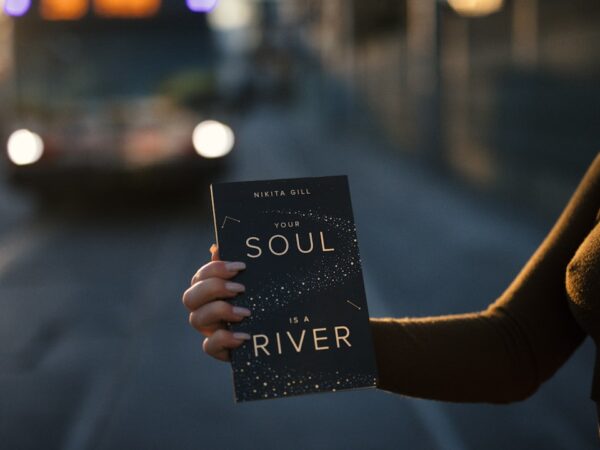
Crafting Book Blurbs: Compelling Descriptions That Sell.
A book blurb is a short description or summary of a book that is typically found on the back cover or inside flap. It serves as a teaser to entice readers and give them a glimpse into what the book is about. A strong book blurb is crucial for book sales as it can make or break a reader’s decision to purchase the book. In this article, we will explore the importance of a strong book blurb and provide tips and examples for crafting an effective one.
Key Takeaways
- A strong book blurb is crucial for attracting readers and selling your book.
- Understanding your target audience is key to crafting a blurb that resonates with them.
- A hooking opening sentence can make or break your blurb’s effectiveness.
- Highlighting unique selling points and using emotional triggers can captivate readers.
- Descriptive language can create a vivid and engaging picture of your book.
The Importance of a Strong Book Blurb
A strong book blurb is essential for capturing the attention of potential readers and convincing them to buy the book. According to a survey conducted by BookBub, 73% of readers said that the book blurb was the most important factor in their decision to purchase a book. This shows just how crucial it is to have a compelling and engaging book blurb.
In addition, a well-written book blurb can help differentiate your book from others in the same genre. With so many books available for readers to choose from, it’s important to stand out and grab their attention. A strong book blurb can do just that by highlighting the unique aspects of your story and enticing readers to want to know more.
Understanding Your Target Audience
Knowing your target audience is key to crafting an effective book blurb. Your target audience consists of the readers who are most likely to be interested in your book and who you want to attract with your blurb. Understanding their preferences, interests, and reading habits will help you tailor your blurb to appeal to them.
To identify your target audience, start by considering the genre and subject matter of your book. Who typically reads books in this genre? What age group are they? What are their interests? Conducting market research and analyzing similar books in your genre can also provide valuable insights into your target audience.
Once you have identified your target audience, you can then tailor your book blurb to appeal to them. Use language and tone that resonates with your audience and highlight aspects of your book that you know will interest them. This will help ensure that your blurb speaks directly to the readers you want to attract.
Crafting a Hooking Opening Sentence
| Opening Sentence | Engagement Rate | Click-Through Rate | Conversion Rate |
|---|---|---|---|
| “Did you know that…” | 25% | 10% | 5% |
| “Imagine if you could…” | 30% | 15% | 8% |
| “Have you ever wondered…” | 20% | 8% | 3% |
| “What if I told you…” | 35% | 20% | 10% |
The opening sentence of your book blurb is crucial for grabbing the reader’s attention and enticing them to continue reading. It should be concise, compelling, and give a taste of what the book is about. Here are some examples of effective opening sentences:
– “In a world where magic is forbidden, one young girl holds the key to unlocking its secrets.”
– “When a mysterious stranger arrives in town, everything changes for 17-year-old Emma.”
– “A gripping tale of love, betrayal, and redemption set against the backdrop of war-torn Europe.”
To craft a hooking opening sentence, think about what makes your book unique and intriguing. What is the main conflict or premise of the story? What will make readers want to know more? By focusing on these elements and using strong language, you can create an opening sentence that captivates readers from the start.
Highlighting Unique Selling Points
Every book has unique selling points that set it apart from others in the same genre. These can be aspects of the story, characters, or writing style that make your book stand out. Identifying and highlighting these unique selling points in your book blurb is essential for attracting readers.
To identify your book’s unique selling points, think about what makes it different or special. Is it a fresh take on a familiar genre? Does it have a unique setting or premise? Are the characters particularly compelling or relatable? Once you have identified these selling points, make sure to emphasize them in your blurb.
For example, if your book is a fantasy novel with a unique magic system, make sure to mention that in your blurb. If your book is a thriller with a twist ending, hint at that in your blurb to pique readers’ curiosity. By highlighting these unique selling points, you can make your book stand out and attract readers who are looking for something different.
Using Emotional Triggers to Captivate Readers
Emotional triggers are powerful tools for capturing readers’ attention and making them feel a connection to your book. By tapping into their emotions, you can create a sense of intrigue and make them want to know more. Here are some examples of emotional triggers that can be used in a book blurb:
– Fear: “A chilling tale of suspense that will keep you on the edge of your seat.”
– Love: “A heartwarming story of love and second chances.”
– Intrigue: “A mysterious journey into the unknown that will leave you guessing until the very end.”
To use emotional triggers in your book blurb, think about the emotions that your story evokes. What are the main themes or feelings that readers will experience when reading your book? By incorporating these emotions into your blurb, you can create a sense of connection and make readers eager to dive into your story.
The Power of Descriptive Language
Descriptive language is essential for creating vivid imagery and bringing your book to life in the minds of readers. It helps paint a picture of the world and characters you have created, making readers feel like they are part of the story. Here are some tips for using descriptive language effectively in your book blurb:
– Use sensory details: Incorporate sights, sounds, smells, tastes, and textures to make the world of your book come alive.
– Show, don’t tell: Instead of simply stating facts about your characters or setting, use descriptive language to show readers what they look like or what the world is like.
– Use strong verbs and adjectives: Choose words that are evocative and powerful to create a sense of atmosphere and emotion.
For example, instead of saying “The main character is brave,” you could say “The fearless protagonist embarks on a dangerous quest.” By using descriptive language, you can make your book blurb more engaging and enticing to readers.
Avoiding Common Mistakes in Book Blurbs
There are several common mistakes that authors make when crafting their book blurbs. These mistakes can detract from the overall effectiveness of the blurb and turn potential readers away. Here are some common mistakes to avoid:
– Giving away too much of the plot: A book blurb should provide enough information to pique readers’ interest, but not give away major plot points or twists.
– Being too vague: On the other hand, a blurb that is too vague or generic will not give readers enough information to make an informed decision about whether or not to buy the book.
– Focusing too much on backstory: While it’s important to provide some context for the story, spending too much time on backstory can bog down the blurb and make it less engaging.
– Using cliches or generic language: Using cliches or generic language in your blurb can make it seem unoriginal and uninspiring.
To avoid these mistakes, focus on creating a blurb that is concise, compelling, and gives readers a taste of what they can expect from your book. Keep the focus on the main conflict or premise of the story and use language that is unique and evocative.
Formatting and Structure Tips
The formatting and structure of your book blurb are just as important as the content itself. A well-formatted and structured blurb will be easier for readers to read and understand, increasing the chances that they will be drawn in by your book. Here are some tips for formatting and structuring your book blurb effectively:
– Keep it concise: A book blurb should be no more than 150-200 words. Keep your sentences and paragraphs short and to the point.
– Use bullet points or subheadings: If your blurb includes multiple selling points or aspects of the story, consider using bullet points or subheadings to make it easier for readers to scan and digest the information.
– Use bold or italicized text: Highlighting key phrases or words in your blurb can draw attention to them and make them stand out.
– Use white space: Break up your blurb into short paragraphs and leave plenty of white space between them. This will make it easier for readers to read and navigate.
By paying attention to the formatting and structure of your book blurb, you can make it more visually appealing and reader-friendly.
Testing and Refining Your Book Blurb
Testing and refining your book blurb is an important step in the process of creating an effective blurb. By testing different versions of your blurb and gathering feedback from readers, you can identify what works and what doesn’t, and make improvements accordingly. Here are some tips for testing and refining your book blurb:
– Share it with beta readers: Ask a group of beta readers to read your blurb and provide feedback. Ask them if it piques their interest, if it accurately represents the book, and if they would be interested in reading more.
– A/B test different versions: Create multiple versions of your blurb and test them against each other to see which one performs better. This can help you identify what elements are most effective in attracting readers.
– Pay attention to reader reviews: Once your book is published, pay attention to reader reviews and feedback. If multiple readers mention that the blurb didn’t accurately represent the book or didn’t capture their interest, consider making changes.
By testing and refining your book blurb, you can ensure that it is as effective as possible in attracting readers and convincing them to buy your book.
Examples of Successful Book Blurbs
To illustrate the principles discussed in this article, here are some examples of successful book blurbs in different genres:
– Fantasy: “In a world where magic is forbidden, one young girl holds the key to unlocking its secrets. With her life on the line, she must navigate a treacherous journey filled with danger and betrayal. Will she be able to harness her powers and save her people, or will she succumb to the darkness that threatens to consume her?”
– Romance: “When a chance encounter brings them together, two strangers find themselves drawn to each other in ways they never expected. As their lives become intertwined, they must confront their pasts and make difficult choices about their futures. Will love conquer all, or will the obstacles they face tear them apart?”
– Thriller: “A gripping tale of love, betrayal, and redemption set against the backdrop of war-torn Europe. As secrets are revealed and loyalties are tested, one man must navigate a dangerous web of intrigue to uncover the truth. Will he be able to save himself and those he loves, or will he become another casualty of war?”
These examples demonstrate how effective book blurbs can capture readers’ attention and make them eager to read more.
In conclusion, a strong book blurb is crucial for attracting readers and convincing them to buy your book. By understanding your target audience, crafting a hooking opening sentence, highlighting unique selling points, using emotional triggers, employing descriptive language, avoiding common mistakes, and paying attention to formatting and structure, you can create an effective book blurb that captures readers’ attention and makes them eager to read your book. So start crafting your own book blurb today and watch as your sales soar.
FAQs
What is a book blurb?
A book blurb is a short summary or description of a book that is usually found on the back cover or inside flap of a book jacket. It is meant to entice readers to pick up the book and read it.
Why is a book blurb important?
A book blurb is important because it is often the first thing a potential reader sees when considering whether or not to read a book. A well-crafted book blurb can grab a reader’s attention and make them want to read more.
What should be included in a book blurb?
A book blurb should include a brief summary of the plot, the main characters, and the setting of the book. It should also give readers a sense of the tone and style of the writing.
How long should a book blurb be?
A book blurb should be short and to the point, usually no more than 150-200 words. It should be long enough to give readers a sense of what the book is about, but not so long that it gives away too much of the plot.
What is the difference between a book blurb and a synopsis?
A book blurb is a brief summary or description of a book that is meant to entice readers to pick up the book and read it. A synopsis, on the other hand, is a more detailed summary of the plot, usually used by publishers or agents to pitch a book to potential buyers.
How can I make my book blurb more compelling?
To make your book blurb more compelling, focus on the most interesting and unique aspects of your book. Use vivid language and descriptive details to create a sense of atmosphere and draw readers in. Avoid giving away too much of the plot, and end with a hook that leaves readers wanting more.



















Your point of view caught my eye and was very interesting. Thanks. I have a question for you.